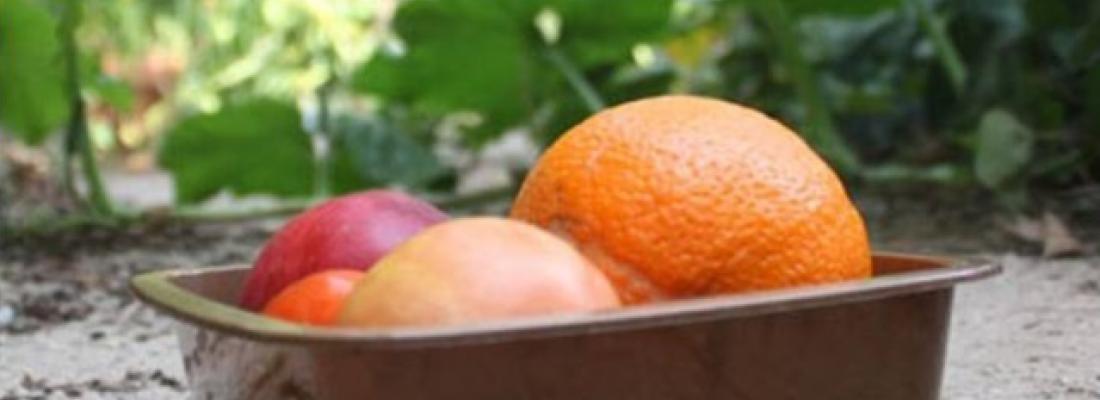Bioeconomy 4 min
New food packaging materials made using agri-industrial wastes
EcoBioCAP has enabled the production of packaging materials made entirely by converting food industry wastes and by-products into packaging constituents. Long-lasting and adapted to perishable foods, their properties have been adjusted to the demands of different products. EcoBioCAP is also posing the first foundations for more widespread recycling of these "wastes turned into raw materials".
Published on 23 May 2016

Organic waste: a source of wealth to serve the circular economy
In France, the agri-food industry produces 93% of the country's industrial organic waste. In 2008(1), this accounted for 805,000 tonnes of organic materials, made up of wastes (e.g. unused parts of vegetables), by-products (e.g. oilseed meals, etc.) and 2.7 million tonnes of sludge/effluent. What should be done with all these wastes? One innovative approach consists in considering them as useful starting materials (due to their low cost, availability and biodegradability, etc.). The EcoBioCAP project thus focused on how they could be recycled into food packaging materials such as films or biocomposite trays.
EcoBioCAP: a pioneering programme for a new generation of packaging materials
The numerous results generated by the EcoBioCAP project include the production at a semi-industrial scale of biocomposite food trays made up of a polyester matrix containing stiffening agents: short fibres of <1mm spread homogeneously throughout the matrix.
Industrial effluents: washing waters from olive oil mills, cheese whey, etc. were used as a fermentation substrate for the production of microbial biopolyesters called polyhydroxyalkonates, or PHA. Lignocellulosic by-products such as wheat straw, subjected to a combination of dry fractionation processes, served as filler agents of micrometric size. By combining structuring technologies at different scales, the biopolyesters and lignocellulosic fillers were shaped in a pilot plant injection moulding process to produce trays adapted to the packaging of fresh foods (fruits, vegetables, fermented cheeses, sandwiches, etc.).
The barrier properties of these trays can be modulated by adjusting the mass fraction and morphology of the filler agent so that they will meet the specific requirements of different food products.
Their mechanical properties can be enhanced by acting on fibre/matrix interface adhesion or by adding a biosourced adhesive (e.g. based on zein or pullulan).
The health safety of these trays has been tested for the persistence of residues from plant protection products, their migration into foods, and their stability under extreme conditions. It has been shown that the successive processes were able to lower the concentrations of the classic contaminants found in straw (epoxiconazole) or whey (β hexachlorocyclohexane), below the threshold that might constitute a health threat to consumers.
Finally, environmental concerns were addressed by studying the ecotoxicity of the packaging materials, and Life Cycle Analysis was applied to the production of PHA and the manufacture of trays and cellophane-type film for the packaging of strawberries.
Interesting opportunities for companies in different sectors
In practice, this major project has enabled the development of analytical procedures, the testing at different scales of innovative technologies and the development of decision-support tools. These will be of interest to companies in a variety of sectors (packaging, management and recycling of organic wastes/effluents, the designers of agro-materials applicable in different sectors, environmental consultancy firms, etc.). Notable outputs thus include:
- A decision-support tool to choose packaging materials as a function of food type. This tool will be available in the medium term for use by industry,
- A pilot technology for the conversion of fatty and dairy effluents into PHA, including (if necessary) a dephenolisation step,
- The development of filler agents made using lignocellulosic waste (wheat straw, olive pits, brewing waste, etc.) subjected to a combination of dry fractionation processes,
- Prototype series of biodegradable food packaging items made using 100% food waste and adapted to the storage of fresh food products, tested under real-life conditions up to the consumer stage,
- Methodological procedures adapted to analysing the safety of these materials with respect to humans and the environment.
(1) Source: AGRESTE PRIMEUR – N°245 – July 2010 – Déchets des Industries agro-alimentaires
(2) EcoBioCAP project : ECOefficient BIOdegradable Composite Advanced Packaging, 2011-2015. Partners : 4 research institutes : INRAE (Fr), CSIC (Esp), SIK (Swe), Fraunhofer IVV (Deu), 5 universities : Minho (Prt), Rome – La Sapienza & Bologne (Ita), Cork (Irl), Industrials : IBET (Prt), NBM (Esp), CBHU (Hun), Novamont (Ita), FürstPlast (Fr), Le Fédou (Fr), Alterbio (Fr).
